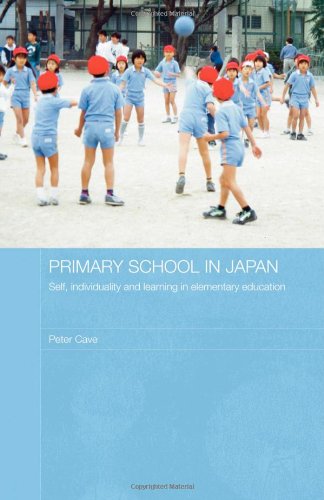

Most ebook files are in PDF format, so you can easily read them using various software such as Foxit Reader or directly on the Google Chrome browser.
Some ebook files are released by publishers in other formats such as .awz, .mobi, .epub, .fb2, etc. You may need to install specific software to read these formats on mobile/PC, such as Calibre.
Please read the tutorial at this link. https://ebooknice.com/page/post?id=faq
We offer FREE conversion to the popular formats you request; however, this may take some time. Therefore, right after payment, please email us, and we will try to provide the service as quickly as possible.
For some exceptional file formats or broken links (if any), please refrain from opening any disputes. Instead, email us first, and we will try to assist within a maximum of 6 hours.
EbookNice Team

Status:
Available4.5
19 reviews
ISBN 10: 0203935810
ISBN 13: 9780203935811
Author: Peter Cave
The balance between individual independence and social interdependence is a perennial debate in Japan. A series of educational reforms since 1990, including the implementation of a new curriculum in 2002, has been a source of fierce controversy. This book, based on an extended, detailed study of two primary schools in the Kinki district of Japan, discusses these debates, shows how reforms have been implemented at the school level, and explores how the balance between individuality and social interdependence is managed in practice. It discusses these complex issues in relation to personal identity within the class and within the school, in relation to gender issues, and in relation to the teaching of specific subjects, including language, literature and mathematics. The book concludes that, although recent reforms have tended to stress individuality and independence, teachers in primary schools continue to balance the encouragement of individuality and self-direction with the development of interdependence and empathy.
1 Education and individuality in Japan
Demands for reform in Japanese education
Individuality and educational reform: the development of government policy
Educational reform during the 1990s
Controversies surrounding the 1998 curriculum
Individuality and basic academic attainment
‘Individuality’ and its meanings
Kosei and the power of ambiguous rhetoric
Selfhood in Japan
The interdependent self
The individual self
Individualism and ‘the individual’ as concepts
Japan’s multiple discourses of self
Sociocultural pedagogy and Japanese primary education
Conclusion
Notes
2 Groups and individuals at primary school
Nakamachi and Morikawa primary schools and educational reform
The concept of the class group in Japanese pedagogy
Images of the teacher and the class group in television dramas
Sixth year classes at Nakamachi and Morikawa
The class group as nakama
The class group and its activities at Nakamachi and Morikawa
Music and song in the making of the class group
Interdependence beyond the class group: mixed-age activities
Developing the self-disciplined individual at Nakamachi and Morikawa
Developing moral autonomy
Individuality and ‘deviant’ behaviour
Conclusion
Notes
3 Stories of the self
Kokugo: the explicit and the hidden curriculum
Self and personal identity in the sixth year kokugo textbooks
Identity, dedication and maturity in textbook fiction
Self-direction and learning from others in the classroom community
Developing expression in the kokugo textbooks
Debate and presentation at Nakamachi
Conclusion
Notes
4 Mathematical relationships
The teaching and learning of mathematics: questioning theory and practice
Studying proportion at Nakamachi
Studying proportion in 6–3
Studying proportion in 6–1
Comparison of teaching in 6–1 and 6–3
Mathematics lessons at Nakamachi as sociocultural learning
Learner autonomy and the teacher’s role
Learning from one another: individuality and the community of inquiry
Principled knowledge and mathematics as experience
Conclusion
Notes
5 Learning gender
Approaches to gender and schooling
Japanese education and gender
Institutional structures and practices at Nakamachi and Morikawa
Classroom practices and gender
Seating
Speaking out and gaining attention
Gender, behaviour and material culture in school
Lessons: home economics and physical education
Children’s play
Art and material culture
Dealing with gender in the classroom and beyond
Teachers’ perceptions of gender difference
Strengthening and challenging gender categories
Conclusion
Notes
6 Ceremonial creations
Ritual and socialization in school events
Last term: preparing for graduation
The Send-off for the Sixth Years
The graduation show at Nakamachi
The graduation ceremony
The graduation ceremony as a rite of passage
Ritual and other narratives
Conclusion
Notes
7 The next stage—2002 and all that
The 2002 curriculum and its aftermath: sōgō gakushū and small-group teaching
Sōgō gakushū at Morikawa and other Sakura primary schools
Fureai with the preschoolers: fifth year activities in sōgō gakushū
Experiencing the natural environment: sixth year activities in sōgō gakushū
Assessing children’s performance in sōgō gakushū
Sōgō gakushū at other Sakura primary schools and beyond
Assessing sōgō gakushū: self, individuality, and community
Small-group teaching at Morikawa
Conclusion
Notes
Conclusion
Educational reform in Japanese primary schools: innovation and continuity
Learning and selfhood in Japanese primary education
Sociocultural learning: lessons from Japanese primary schools
Anthropology of education? Anthropology of learning?
elementary school japanese books
elementary school in japan
japanese elementary school textbook
japanese school books
primary education in japan
japanese primary school uniform
Tags: Peter Cave, School, Japan